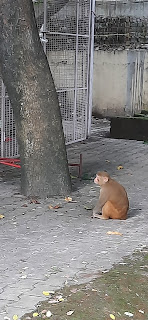The Char Dham, is the four most famous Hindu pilgrimage circuit in India which are believed to be the abodes of Hindu gods. Located in the four directions of India, the circuit consists of four sites - to the north is Badrinath, to the west is Dwarka, to the south is Rameshwaram and to the east is Puri.
At Badrinath the famous temple is Badrinath Temple and the presiding deity is Shri Badrinath (Vishnu).
At Rameshwaram the famous temple is Rameshwaram Temple and the presiding deity here is in the form of a Linga with the name Sri Ramanatha Swamy.
At Puri the temple is known as Lord Jagannath Temple and the presiding deity is Lord Jagannath. He is present together with His elder brother Balabhadra and His sister Subhadra.
At Dwarka the main temple is The temple of Dwarkadheesh (Lord Krishna), also known as Jagat Mandir.
There are Matt's associated with each of these temples and each of these maths was assigned the task of maintaining and preserving for posterity, one of the four Vedas (the main scriptures of Hinduism). They are:
1. Sharada Math - Sama Veda - West - Dwaraka
2. Shringeri Math - Yajur Veda - South - Rameshwaram
3. Jyotir Math - Atharva Veda - North - Bhadrinath
4. Govardhan Math - Rig Veda - East - Puri
All the Four Dhamas located at cardinal points of the Indian sub-continent are believed to have been liked by Lord Vishnu intimately. It is said and believed that He takes His bath at Rameswaram, meditates at Badrinath, dines at Puri and retires at Dwarika.
Popular writings of many cites that for National Integrity, Adi Shankaracharya had agreed and insisted that Joshis from Kashi, Kashmir, Nepal or Maharashtra should be the poojaris at Rameshwaram; the Chowbey Brahmins from Orissa should be the Poojaris at Dwaraka and the Poojaris at Jagannath Puri should be the Pandits from Gujarat. Adi Shankaracharya arranged that the idol at Badrinath be offered chandan {sandalwood} and silk from the south India also the head priest comes from south India {namboodiri brahmin from kerala} and the Shivling at rameshwaram be offered Ganga water from north and the priest comes from north India {gharwal brahmin or from Varanasi in north}
The reason why Adi Shankaracharya started the tradition of the char dham yatra and the religious gathering of the Kumbh mela was that he wanted to integrate India spiritually. There was a north / south cultural divide and India was split up.
This was Adi Shankaracharya ‘s vision to have a flow of spiritual energy across India and as a direct result India was firmly integrated.
These yatras are only to connect to the Divine energy that prevails there and that Moksha only comes when one cleans oneself mentally, physically and spiritually....
This had become a big business, until the episode of the June disaster in 2013 which has slowed down people going there, but recently people again have started trickling in large number to seek their GODS for MOKSHA. Religion has become a money making business and the spiritual super market has a lot to offer and trap people
Rameshwaram has Tamil priest though, and Kedarnath has a Karnataka Priest and Pashupathinath has from Butt community of Tulu Nadu.
Not sure if Shankaracharya did it during his time.
Tantra over years dwindled in North India with the rise of Smarta tradition. and later for new Vedantha traditions which denounced the concepts of old Vedic rituals and initiated for philosophies mostly in monastic order intended for social spiritual connections. The key concepts of these traditions were to stop all sorts of rituals and complex knowledge-based procedures to connect to the god, rather simply link oneself to the supreme being.
Thus the traditions of Tantra slowly ended as large scale rituals for Yajnas, Homas etc as done in Vedic period started ending to much more simplified easy to link/understand traditions. The Bhakti movement took spiritualism to masses.
So essentially much of North India became a less ritualistic oriented style of worship unlike South where these older traditions continued, especially in Kerala and Tulu coast which still retains old Vedic era concepts without much dilution.
It is part of the recorded history that in the year 1776, Garhwal King sent invitations to priests from South to preside over the temples of Badrinath and Kedarnath.
Hoping, wishing and praying that I am blessed to cover all four this year. It is believed that every Hindu should visit the Char Dhams during one's lifetime, irrespective of the fact if visiting these sites helps achieve moksha (salvation) or not, it help us understand history, and has it's own advantages and should I say disadvantages as well?




















































